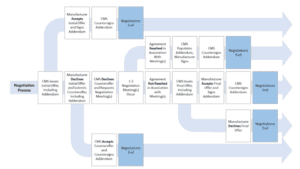Roth IRA Conversions: Is Now a Good Time?

Clients who have (or anticipate) reduced income levels in 2022 because of reduced asset values might also find themselves in even lower income tax brackets. A lower income tax bracket obviously also reduces the overall tax cost of the Roth conversion.
A Roth conversion also allows those who exceed the income thresholds to contribute to a Roth directly — $214,000 for a couple or $144,000 for an individual — to fund a Roth.
Is a Roth Conversion the Right Move?
There are many additional considerations when determining whether now is the time to execute a Roth conversion.
The growth on the converted amount is not taxed when the client withdraws the funds during retirement. However, the client will have to pay tax on the 2022 conversion, which will be due by April 15, 2023. Clients therefore must consider whether they anticipate having cash on hand to cover the tax bill given the possibility of a protracted economic downturn. Selling investments in a down market to cover the tax bill might be counterproductive, locking in some of the investment losses for the client.
Additionally, clients can no longer recharacterize (or undo) the conversion. Under pre-2018 law, clients could use the benefit of hindsight and undo the conversion if the market did not perform as expected. The 2017 tax reform eliminated this benefit.
Investors must also wait five years before they can withdraw the amounts that have been converted (regardless of the client’s age) — meaning that the funds converted will be locked into the Roth for at least five years, or the client will incur a 10% penalty on the amounts withdrawn. That five-year clock starts running on Jan. 1 of the year the client executes the Roth conversion.
Conclusion
There are many benefits to funding a Roth IRA. Funding a Roth now does create a source of tax-free income in retirement and Roths are also exempt from the IRS’ lifetime minimum distribution rules. Still, it’s important to examine the client’s situation as a whole before making any moves in today’s market.
Learn more with Tax Facts, the go-to resource that answers critical tax questions with the latest tax developments. Online subscribers get access to exclusive e-newsletters.
Discover more resources on finance and taxes on the NU Resource Center.
Follow Tax Facts on LinkedIn and join the conversation on financial planning and targeted tax topics.
Get 10% off any Tax Facts product just for being a ThinkAdvisor reader! Complete the free trial form or call 859-692-2205 to learn more or get started today.





